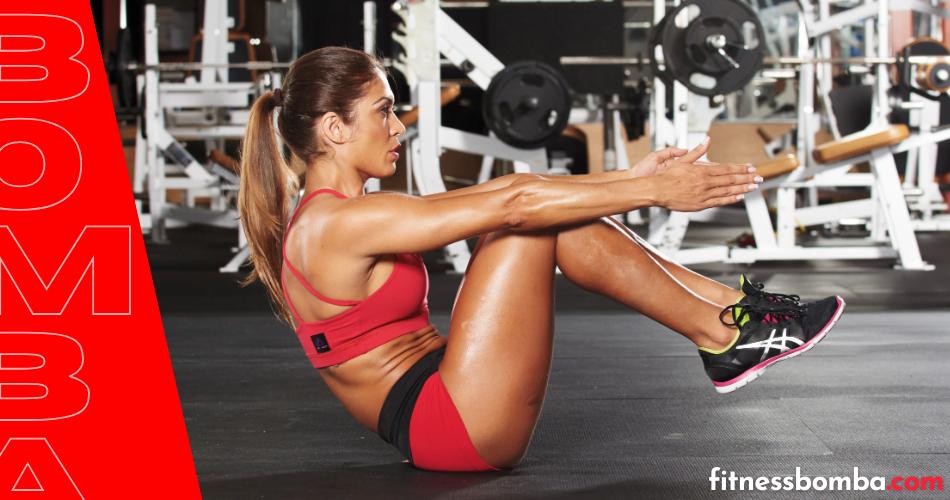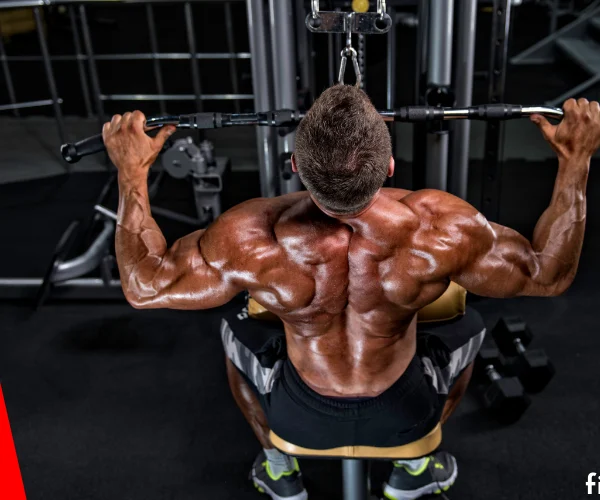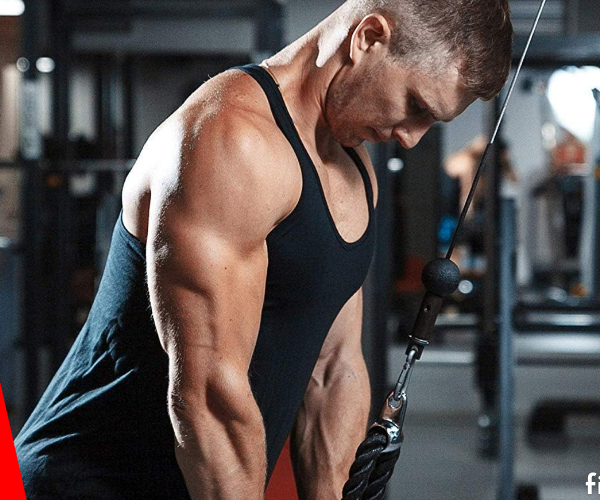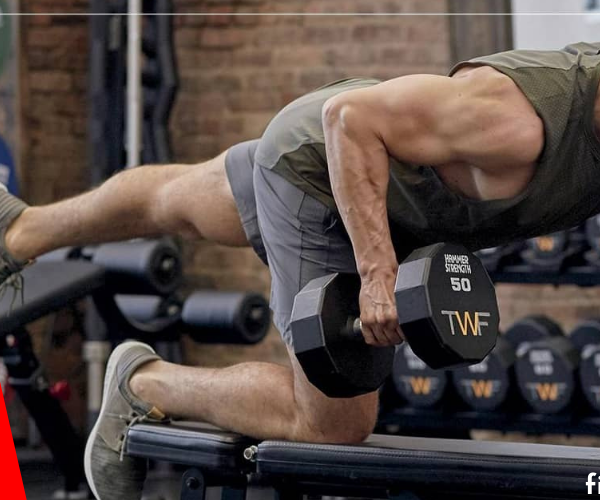Can you really get a six-pack without doing crunches? This question might make you rethink what you know about abs and core strength. The fitness world is now exploring new ways to work out your abs. These new methods can help you get those six-pack abs you’ve always wanted.
Crunches are no longer the only way to a defined midsection. Today, fitness pros recommend diverse exercises that target your core better and keep workouts interesting. These new techniques aim to change how you see core strength training and help you get the six-pack abs you dream of.
This guide will show you six powerful no-crunch exercises to change your abs routine. We’ll see how these exercises boost your core strength, fitness, and help you get a midsection that stands out. Get ready to explore a new world of ab exercises that will challenge you and change how you see core training.
Table of Contents
Key Takeaways:
- Six-pack abs can be achieved without traditional crunches
- Diverse ab exercises lead to more effective core strength training
- No-crunch abdominal workouts can be more engaging and enjoyable
- Alternative exercises target the core muscles more comprehensively
- A strong core improves overall fitness and physical performance
- Innovative ab exercises can help prevent workout boredom and plateaus
Understanding the Importance of Core Strength
Core strength training is key to a fit body. It helps you get a flat stomach and boosts your overall fitness. Let’s see why focusing on your core is important for fitness and daily life.
Benefits of a Strong Core
A strong core improves balance, stability, and posture. It supports your spine, reducing back pain and injury risk. Core strength also helps with athletic performance, making daily tasks easier. It’s essential for lifting groceries or playing sports.
Why Traditional Crunches May Not Be Enough
Crunches focus on the abs but miss the rest of the core. Effective toning requires exercises that work all core muscles. Planks, Russian twists, and leg raises are better for a full core workout. These exercises challenge your muscles from different angles, leading to better results.
The Role of Diet in Achieving Visible Abs
Belly fat burning is key to showing off toned abs. Even a strong core can be hidden by fat. A diet rich in protein and low in processed foods helps with fat loss. Combine a healthy diet with core exercises for the best results. Remember, abs are made in the kitchen as much as in the gym.
The Science Behind Six-Pack Abs
Understanding how your abdominal muscles work is key to getting six-pack abs. The rectus abdominis, also known as the “six-pack muscle,” runs down the front of your belly. This muscle group is what makes the six-pack look possible when it’s well-defined.
To tone your abs, you need to work on all core muscles, like the obliques and transverse abdominis. The obliques sit on the sides of your body and help shape your waist. The transverse abdominis is the deepest muscle and pulls your belly button towards your spine.
Working on the transverse abdominis is crucial for a strong core. These exercises help strengthen your deep abdominal muscles, which improves your stability and posture. Good exercises for this include planks, hollow holds, and ab roll-outs.
Getting six-pack abs isn’t just about building muscle. You also need to reduce your body fat percentage. This is called “cutting” and it means eating fewer calories and exercising more. As you lose fat, your abdominal muscles become more visible, showing off your six-pack.
Ab Exercises: No-Crunch Alternatives for a Defined Core
Are traditional crunches getting old? Explore no-crunch alternatives to shape your abs. These exercises hit your core from various angles for that sought-after six-pack look.
Plank Variations
Planks are great for strengthening your core. Try side planks to work your obliques or add arm and leg lifts for more challenge. Start with 30 seconds of each plank and increase the time as you get stronger.
Standing Ab Exercises
Standing ab exercises are a unique challenge. Try side bends or woodchoppers to work your core and boost balance and coordination. Do 3 sets of 12-15 reps on each side.
Medicine Ball Workouts
Medicine ball exercises add resistance to your workout. Russian twists and overhead slams target your core fully. Begin with a light ball and move to heavier ones as you get stronger. Do 3 sets of 10-12 reps for each exercise.
Stability Ball Exercises
Using a stability ball in your workout boosts your core strength by engaging stabilizing muscles. Try roll-outs or knee tucks on the ball. These moves challenge your balance and work your abs. Start with 2 sets of 8-10 reps and increase as you get better.
Incorporating Weights into Your Ab Routine
Adding weights to your ab workouts can really boost your core strength. Using dumbbells or kettlebells makes traditional exercises harder. This helps grow your muscles and makes your core stronger.
Weighted exercises work your muscles in a different way than regular crunches. For instance, doing Russian twists with a dumbbell works your obliques harder. Adding weight to planks makes your whole core work harder, including deep muscles.
Try these effective ab exercises with dumbbells:
Dumbbell Wood Chops: Stand with your feet shoulder-width apart, holding a dumbbell. Twist your body, moving the weight from your hip to the other shoulder.
Weighted Sit-Ups: Lie on your back, bend your knees, and hold a weight at your chest. Do a sit-up, keeping the dumbbell close to you.
Dumbbell Side Bends: Stand straight, holding a dumbbell at your side. Bend sideways, bringing the weight down to your knee.
Start with light weights and focus on doing the exercises right. As you get stronger, slowly add more weight to keep challenging your core.
The Power of Compound Movements for Core Strength
Compound movements are key for building core strength. They work many muscles at once, making them great for a strong core. Let’s see how certain exercises can boost your ab workout.
Deadlifts and Squats for Ab Engagement
Deadlifts and squats are top exercises for your abs. They make your core work hard to keep your spine and pelvis stable. This builds deep core strength, helping your posture and stability.
When you lift heavy, your abs help keep your body straight. This makes your midsection stronger and more defined.
Pull-Ups and Their Impact on Core Muscles
Pull-ups do more than build arm and back strength. They’re also great for your abs. Your core muscles work hard to keep you stable and prevent swinging.
This helps shape and strengthen your core. For more challenge, try adding leg raises while hanging to target your lower abs.
Adding these exercises to your routine can lead to great results. They’re efficient, working many muscles, including your abs, in one go. These exercises help build a strong, useful core for daily life and sports.
Targeting the Obliques: Exercises for a Well-Rounded Core
Working on your core means focusing on oblique exercises. These muscles are on the sides of your abs, giving your midsection that V-shape. They help with posture, stability, and core strength.
Russian twists are great for obliques. Sit on the floor, lean back a bit, and lift your feet. Twist your torso from side to side, touching the ground beside you. For more challenge, use a medicine ball.
Side planks are also excellent for obliques. Start on your side, with your elbow propping you up. Lift your hips off the ground, making a straight line from head to feet. Hold this pose and feel the side abs working.
Using medicine balls in your abs workout adds variety. Try wood chops: stand with feet apart, hold a medicine ball above your head. Bring it down diagonally to the opposite hip. This move really works your obliques.
Bicycle crunches work on both your abs and obliques. Lie down, put your hands behind your head, and alternate bringing an elbow to a knee while extending the other leg. This twisting action targets your side abs well.
Remember, doing these exercises regularly is important. Add them to your routine 2-3 times a week. With good nutrition, you’ll get a strong, defined core.
Lower Ab Exercises: Focusing on the Often Neglected Area
Many people find it hard to work on their lower abs. This area can be tough, but with the right exercises, you can get a defined midsection. Let’s look at some top exercises for both men and women.
Reverse Crunches and Their Benefits
Reverse crunches are great for targeting the lower abs. They work on the rectus abdominis muscle, which gives you that six-pack look. To do a reverse crunch, lie on your back, lift your legs, and curl your hips off the floor.
This move deeply works your lower abs, building strength and definition.
Leg Raises for Lower Ab Definition
Leg raises are key for a strong lower ab workout. Start by lying on your back with your legs straight. Lift your legs until they’re straight up, then lower them back down without touching the ground.
This exercise really tests your lower abs, making it great for core strength.
Adding these exercises to your routine can boost your core strength and look. Remember, sticking with it is important for your lower abs. Combine these exercises with a healthy diet for the best chance at getting that six-pack.
Upper Ab Exercises: Sculpting the Top of Your Six-Pack
Want to shape your upper abs? You’re in luck! These exercises focus on the top of your stomach muscles. They help create that sought-after six-pack look. Let’s check out some effective moves for at home or the gym.
Bodyweight exercises are perfect for upper abs. Try reverse crunches or bicycle kicks. These exercises work your upper abs without needing special gear. For more challenge, add a stability ball to your routine. It boosts the workout’s intensity and helps with balance.
At the gym, an ab exercise machine can be very helpful. Cable crunches on a machine target your upper abs well. They let you adjust the resistance, making them good for all fitness levels. Another great choice is the captain’s chair. It’s ideal for leg raises that work your entire core, focusing on the upper part.
Remember, sticking with upper ab exercises is important. Aim for 2-3 sessions a week, focusing on doing them right rather than just doing lots. Mix these targeted exercises with a good diet and fitness plan. Soon, you’ll see those upper abs showing!
The Role of Cardio in Revealing Your Abs
Cardio is key to burning belly fat and toning the abs. It cuts down overall body fat, showing off the muscles beneath. Doing cardio regularly can greatly help you get that six-pack look.
High-Intensity Interval Training (HIIT) for Fat Burning
HIIT is now a top choice for losing belly fat. It switches between intense exercise and short breaks. This type of workout boosts your metabolism, helping you burn fat even after you stop.
A common HIIT workout might be sprinting for 30 seconds, then walking for 30 seconds. This pattern is repeated for 15-20 minutes.
Steady-State Cardio vs. HIIT for Ab Definition
Steady-state cardio, like jogging or cycling at a steady pace, helps with fat loss. But HIIT is often better for toning the abs. HIIT works more muscles and burns calories faster. Still, both cardio types help show off abs with the right diet and strength training.
For best results, be consistent and intense with your cardio. Aim for 150 minutes of moderate cardio or 75 minutes of vigorous cardio each week. Remember, spot reduction doesn’t work. Focus on losing fat overall to see your abs.
Creating a Balanced Ab Workout Routine
A well-rounded ab workout routine is key to achieving a flat stomach. Effective abdominal workouts target all core areas for balanced development. Start by selecting exercises that work your entire midsection, including the upper abs, lower abs, and obliques.
For upper abs, try bicycle crunches or stability ball crunches. For lower abs, do leg raises or reverse crunches. Work your obliques with side planks or Russian twists. Mixing these moves into your routine gives you comprehensive results.
How often you work your core is important. Aim to do core exercises 3-4 times a week. This allows for rest days to help your muscles recover. As you get better, make your exercises harder. An ab exerciser can add resistance and challenge to your workouts.
Consistency is key. Stick to your routine and slowly increase the intensity for the best results. Combine your abdominal workouts with a healthy diet to show off your hard work. With dedication and a balanced approach, you’ll get a stronger, more defined core.
Common Mistakes to Avoid in Your Ab Training
Many people make mistakes when training their abs, which can slow down progress. Overtraining is a big issue. Abs need rest just like any other muscle group. Working them every day can lead to fatigue and slow results.
Poor form is another common problem. Using momentum or not engaging the core properly reduces the effectiveness of exercises. It’s crucial to focus on controlled movements and proper technique. This is important for both bodyweight exercises and using ab exercise equipment.
Neglecting other muscle groups is a mistake that can impact overall fitness. A balanced workout routine should include exercises for all major muscle groups, not just abs. This approach helps create a strong, well-rounded physique.
Relying too heavily on ab exercise machines at the gym can be counterproductive. While these machines have their place, they often isolate muscles and don’t engage the core as effectively as compound movements. Mixing in free-weight exercises and bodyweight movements can lead to better results and functional strength.
FAQ
What are the benefits of having a strong core?
A strong core helps with stability and balance. It also improves posture and lowers injury risk. Plus, it boosts performance in sports and everyday activities.
Why are traditional crunches not sufficient for developing six-pack abs?
Crunches mainly work on the rectus abdominis muscles. But they miss out on other key muscles like the obliques and transverse abdominis. For a full core workout, you need a mix of exercises.
How important is diet in achieving visible abs?
Diet is key to showing off your abs. Even with lots of ab exercises, fat can hide your muscles. Eating lean proteins and nutrient-rich foods helps cut down fat and show your six-pack.
What are some effective no-crunch alternatives for ab exercises?
Try planks, standing twists, medicine ball moves, and stability ball exercises for a full core workout. These exercises work the whole core in a fun and challenging way.
Why should I incorporate weights into my ab routine?
Adding weights to your ab exercises, like with dumbbells or kettlebells, increases the challenge. It helps grow and strengthen your core muscles. Weighted exercises like crunches and planks take your workout up a notch.
How do compound movements like deadlifts and squats contribute to core strength?
Deadlifts, squats, and pull-ups need strong core muscles to perform right. These exercises work your abs indirectly, helping build core strength and stability.
Why is it important to target the obliques?
The obliques are vital for core strength and rotation. Include exercises like Russian twists and side planks in your routine to strengthen them.
What exercises are effective for targeting the lower abs?
Reverse crunches and leg raises are great for the lower abs. They help work this often-forgotten area.
How can I specifically target my upper abs?
Use cable crunches, declined bench crunches, and certain gym machines to focus on your upper abs. These exercises help shape the top of your six-pack.
What is the role of cardio in revealing abs?
Cardio, especially HIIT, burns fat and shows off your abs. HIIT is better than steady cardio for losing fat and making abs more visible.
What are some common mistakes to avoid when training abs?
Avoid overtraining your abs and ignoring other muscles. Don’t rely too much on special equipment or machines. Always use proper form and balance your workout routine.



